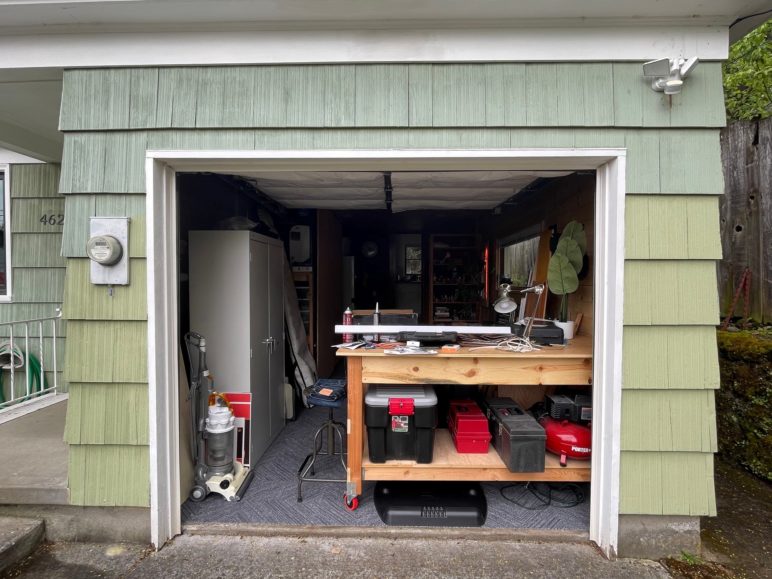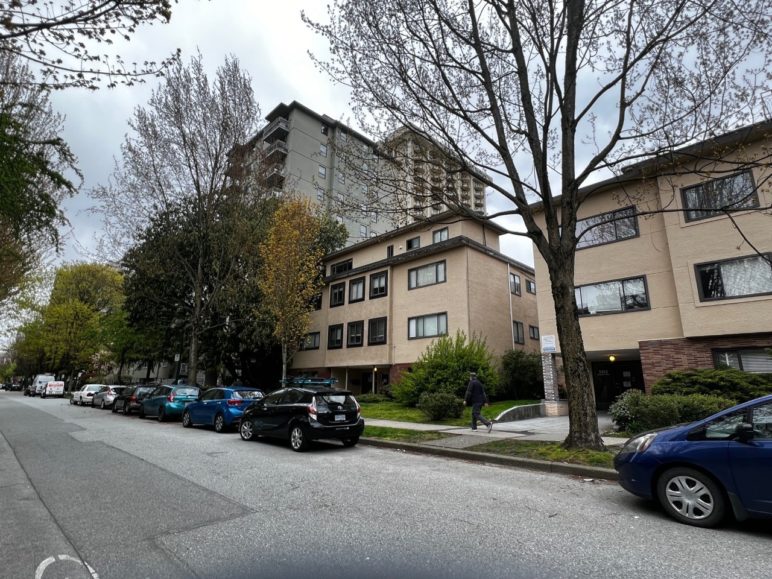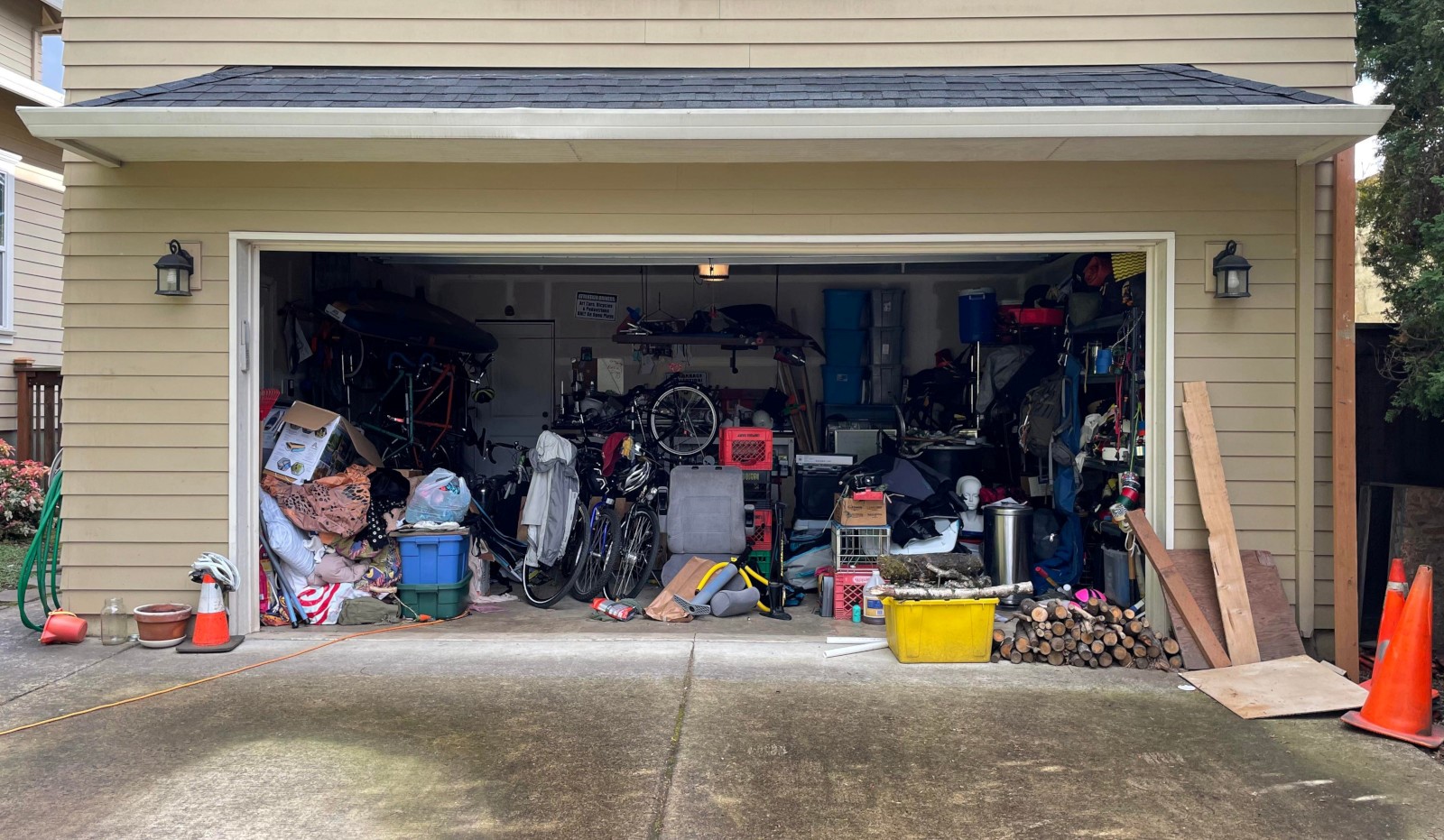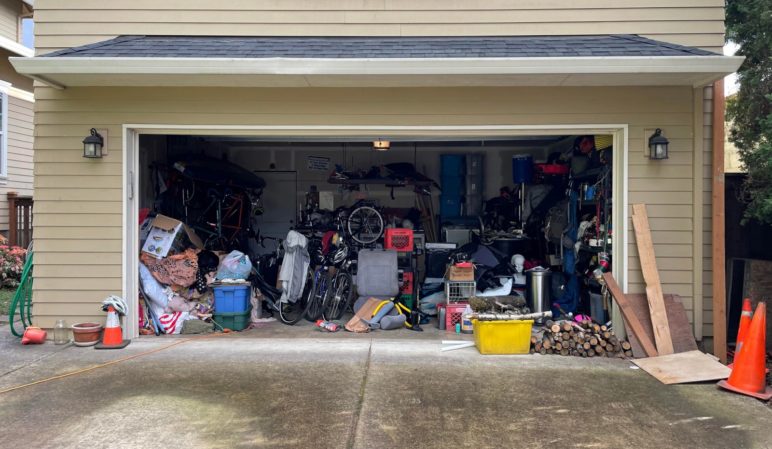Over the decade since I moved to Portland, I have lived in seven different places. Three of those homes had off-street garages, but I always parked my car on the curb.
Why? One house used the garage as an extra living room. Another driveway had a sharp turn into the garage, making it a hassle to back out of. The last garage had a steep incline to get to it, so bikes and other bulky items were stored in it instead.
This isn’t uncommon. A survey of detached homeowners in Sacramento, California, published in February, showed that when there isn’t space enough for both storing a car and household items, the cars are the items that end up moving elsewhere. The survey found that 37 percent of homeowners didn’t store a single car in their garage.
And why would they? The government constructs, maintains and distributes free car storage space along the curb in front of almost every house.
Yet our governments continue to mandate off-street parking with every new home, thinking that somehow the presence of a garage is enough to make someone park in it.
The Sacramento finding adds to a growing body of work documenting how infrequently people use garages for cars:
- Field observations of 97 garages in the Mission District of San Fransisco, California, found that 49 percent of them were not used for car parking.
- A New York Metropolitain Transportation Council survey found only 13 percent of households with a garage parked there.
- A survey of homeowners with a one-car garage in a suburb near Redding, England, found 38 percent of garages were not used for vehicles.
- In Melbourne, Australia, a survey found that 18 percent of residents in single-family detached homes used garages for non-car purposes.
One of the most thorough studies was performed by a team of researchers from UCLA’s Center on Everyday Lives of Families, who photographed the homes of three dozen families over nine years. They found that 3 of 4 households had too much stuff in their garage to park a car.

Parking mandates are based on the premise that garages shouldn’t and won’t become home offices instead. Photo: Naomi Veak, used with permission.
It’s not surprising that when push comes to shove, cars are the items that end up outside. Unlike an old sofa, cars are weatherproof. Curbside spots are also legal to store automobiles, while putting an extra fridge or storage shed in the same spot can get you fined. There is also likely an ample number of spaces available. Surveys of on-street parking spaces in the residential neighborhoods of Davis, California; Eugene, Oregon; and Bellevue, Washington, found that even at peak hours the curb spaces were mostly vacant, with 71 to 89 percent of parking spaces going unused.
Almost everywhere in the Pacific Northwest, as in the rest of the United States and Canada, it’s illegal to build a home without also building one or more parking spaces to go with it. A common defense of these costly parking mandates is that if there is an off-street space to tuck in every car for the night, curbside parking will never get too full. But this idealized image ignores reality. When storing a car on the curb is free, a garage isn’t necessarily a garage: it’s a great big walk-in closet.
To clear up a crowded curb, you have to price it

The magic of pricing, visible this month on a residential street in the West End neighborhood of Vancouver, B.C. Photo by Gordon Price of Viewpoint Vancouver.
Even when curbside parking is a hassle, it can still be difficult to coax a car owner into a garage, no matter how mandatory the garage is. Perhaps no example illustrates this better than the West End neighborhood of Vancouver, British Columbia.
A study in 2017 found that 15 out of 16 car owners who live in the West End have access to an off-street parking space. But even at the busiest times of day, those garages and driveways were half empty, just 47 percent utilized. Meanwhile, 88 percent of on-street spots were full.
Why wouldn’t residents want to use their private garages instead of circling for five minutes for a street spot? Because parking garages that needed to recoup their construction cost were being undercut by the city. At the time, residential parking permits from the city were $6 a month, while most buildings charged $50 or more per month for a 350-square-foot stall. This led to over 6,000 residents opting for the cheaper city permits and fighting it out daily over 2,747 permitted spots.
Ensuring there were more off-street parking spots than cars did not solve this problem. Vancouver had required the construction of off-street parking spaces since 1959, and now they outnumbered on-street spaces by 8 to 1. There was more than enough room for everyone’s cars. The problem was that the city refused to give its residents a reason to use all of it—that is, it failed to charge an on-street price that would make the off-street spots attractive.
To change this, the city in 2017 raised the rates for new permits to $30 per month and converted 22 block faces from free to $1 per hour. In short, it worked. Prior to the changes, only 1 of every 5 blocks would have been at or below the city’s target of 60 to 85 percent full. After the pricing changes, all of the blocks were at the target range or below. For someone arriving in the neighborhood, that was the difference between searching 10 minutes for a parking space and consistently having two to three options per block even at the busiest times of day.
When there is so much evidence that people don’t reliably use private parking spaces to store their cars, why does nearly every city still require them to be built? Mandates for off-street parking spaces raise housing costs and prevent housing from being built in the first place. Amid today’s housing shortages, they even seem to be politically unpopular.
But no matter how many off-street spaces a city requires its residents to pay for, curbs aren’t going to stop being appealing places to park. The only thing that will ever make a crowded curbside convenient again is to use a combination of permits, meters, and time limits to manage the public street.
Do that, and about one-third of us might finally get around to cleaning out the garage.









